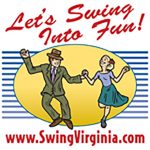CHARLESTON CHALLENGE
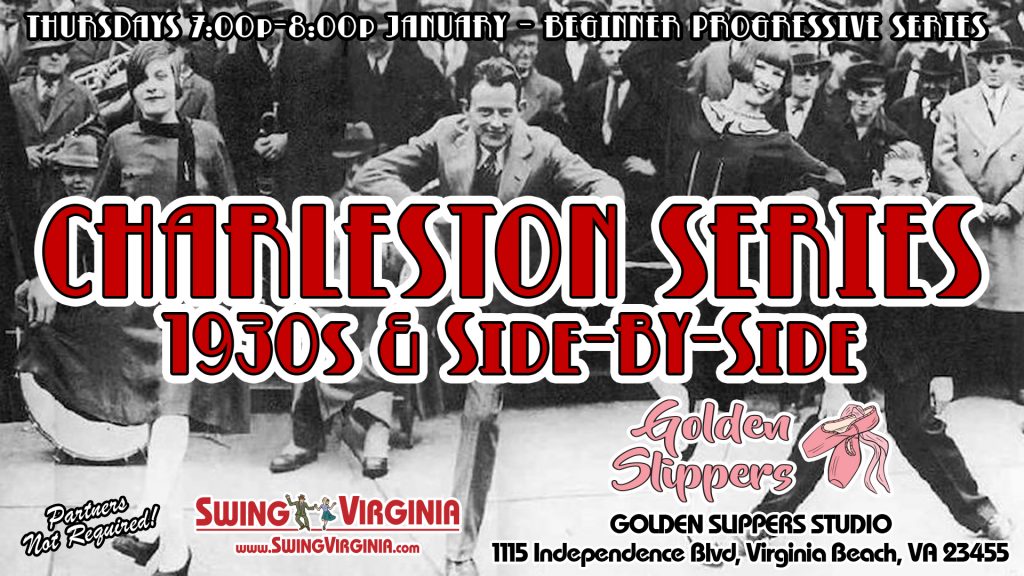
CHARLESTON BABY!
TOPIC: 1930s & Hand-ToHand
4-wk Series Thursdays 7:00p
No Partner? Two Left Feet? – NO PROBLEM! Learn new styles each month!
Golden Slippers-Haygood Studio, 1115 Independence Blvd, Virginia Beach, VA 23455
Cost: $50 Punch-Card (for 4 classes) • $15 Drop-Ins
THIS MONTH’S TOPICS: 1930s/Side-By-Side and Hand-To-Hand Charleston
CABIN FEVER HALF-PRICE SPECIALS: If you KNOW Charleston & need a refresher: half-price. If you want to learn as other Role (Lead Follow) half-price. Ask Instructor for FREE options!
sorta-PROGRESSIVE SERIES: Each week we always go over foundations, then continue to build off the previous week’s moves and keep building your dance bag-of-tricks.
WHAT TO BRING: Flat Shoes or Dance Shoes (do NOT wear street onto dance floor), Water Bottle, Towels (you WILL sweat), and lots of smiles & energy (it’s contagious).
******************************
The Lindy-Charleston is a lively and energetic kicking dance that’s characterized by kick steps and twisting feet. Charleston’s kicking legs and swinging arms continue to characterize the “let loose and have fun” from its origins from the 1920s.
It can be danced as a solo, in a group, or with a partner. It is done with big, loose motions in four basic steps with the arms swinging in opposite motion to the legs. Today, the Charleston is a very popular partner dance in the swing and Lindy Hop communities with many fun variations.
**NOTE FOR DROP-INS: Drop-ins are ONLY ALLOWED IF you already know the Charleston Basics. Since this is an intermediate series and we build upon the basics already covered in earlier weeks. Dancers with prior experience can join but must be able to catch up on their own. Private time may not be available.
NO STREET SHOES!
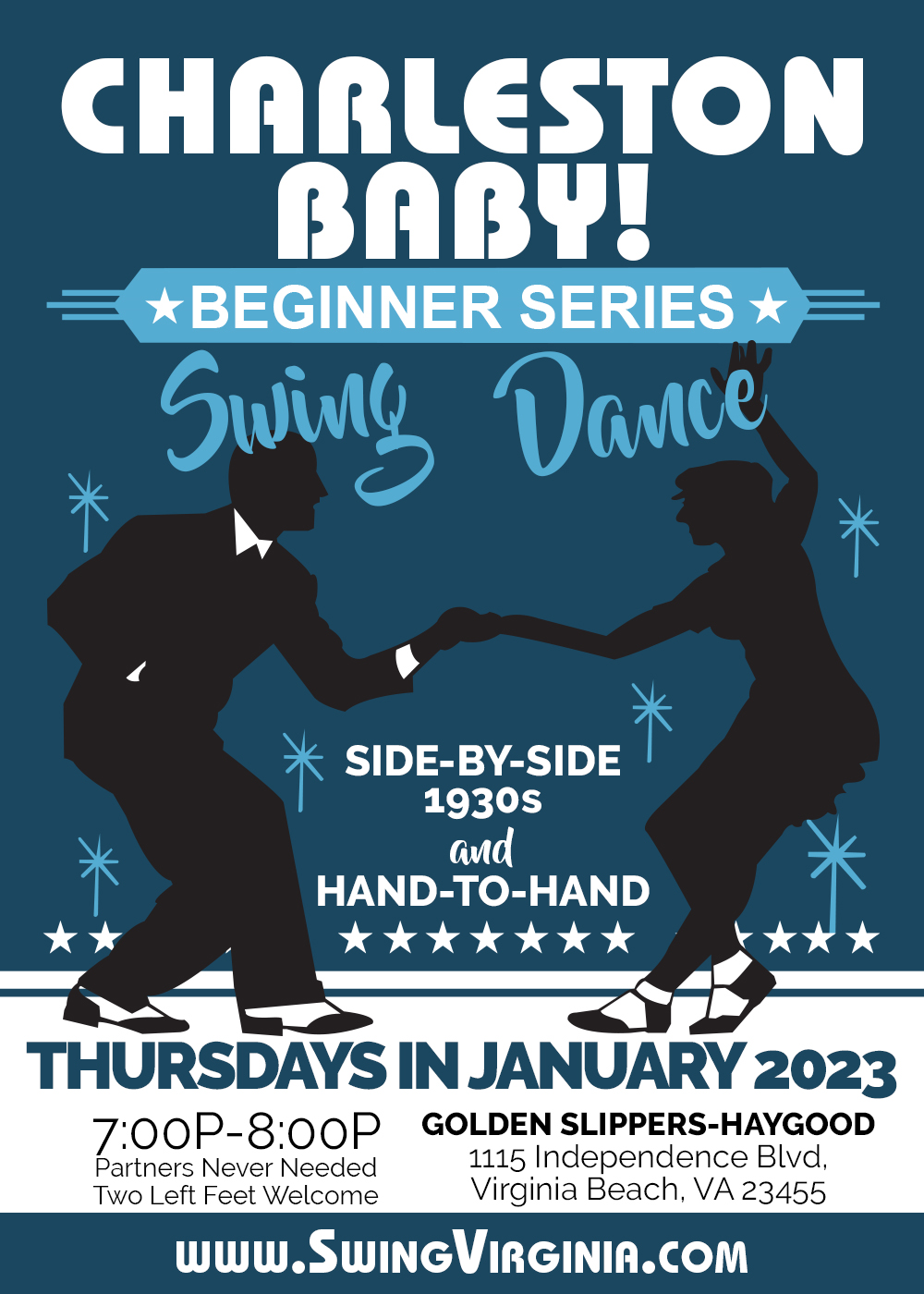
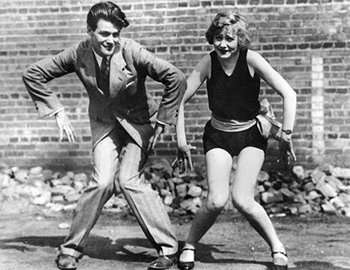
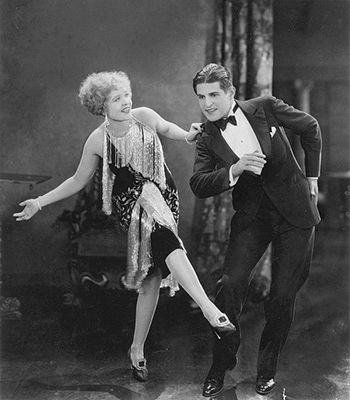
CHARLESTON STYLES CLASS DESCRIPTIONS
Break out your inner Flapper!
Learn and practice the dance that gave birth to Lindy Hop! Each session, you’ll learn a pattern of moves that will make you a confident solo and partner dancer. Kick into some fun and be ready to tear up the dance floor in no time!
Solo & Partners Always Welcome • No Experience Necessary. Cost: $65 (5wk Pass) or $15 Drop-ins.
CHARLESTON TECHNIQUES: This series will teach you the basic patterns different styles of the Charleston Dance. Each week we’ll progressively teach you more patterns and core moves that will be the backbone for your swing dance. Giving you enough “Tools” to keep you dancing with everyone and all night.
SOLO CHARLESTON – You gotta start somewhere! We’ll teach you the basic 8-count footwork and some simple, fun Charleston moves that will get you out on the dance floor. We’ll break things down clearly and give you plenty of practice time. For those of you brand new to swing dancing, this is a great class to get your feet wet and have some fun!
20s CHARLESTON – The 1920s Charleston is a high-energy swing dance popularized by Flappers in the 1920s. The basic step, consisting of kicks & style, allows for a vast range of variations and improvisation and is often done to fast music. Today Charleston is an important dance in Lindy Hop & swing dancing and can be danced in many permutations: alone (solo), with a partner, or in groups of couples or solo dancers.
TANDEM CHARLESTON – The word tandem literally means identical “parts stacked one behind the other”. Tandem-Charleston is also sometimes called Back-Charleston, Shadow-Charleston, and includes Charleston steps where both the lead and the follow are on the same foot (R or L) at the same time. Charleston is that “kicky dance” you see people doing, and was made popular as early as the 1910s.
OTHER STYLES:
30s SIDE-BY-SIDE CHARLESTON – Just like the name, we are attached next to each other adding fun and exciting patterns and hilarity.
HAND-TO-HAND CHARLESTON – Again, the name says it all. Time to spice up your footwork and get creative.
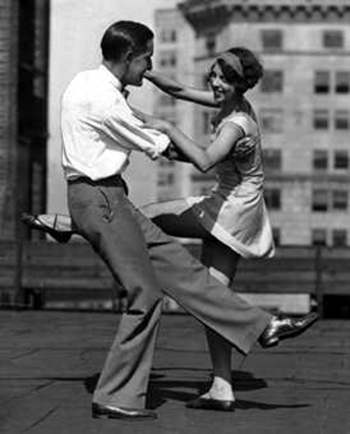
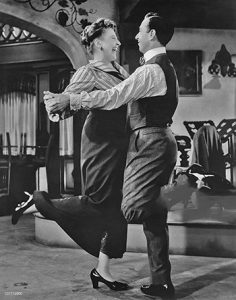
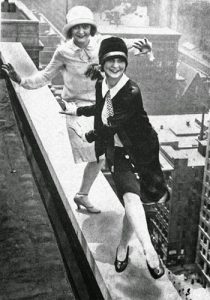

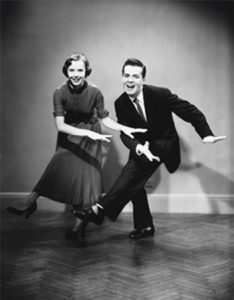
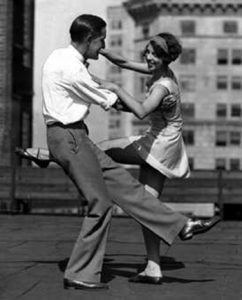

HISTORY OF THE CHARLESTON DANCE
The Charleston Dance was a very popular dance of the 1920s enjoyed by both young women (flappers) and young men of the “Roaring ’20s” generation. The Charleston involves the fast-paced swinging of the legs and big arm movements.
The Charleston Dance became popular as a dance after appearing along with the song “The Charleston,” by James P. Johnson, in the Broadway musical “Runnin’ Wild” in 1923.
The 1920s and the Charleston
In the 1920s, young men and women shed the stodgy etiquette and moral codes of their parents’ generation and let loose in their attire, actions, and attitudes. Young women cut their hair, shortened their skirts, drank alcohol, smoked, wore makeup, and “parked.” Dancing also became more uninhibited.
Rather than dancing the popular dances of the late 19th century and early 20th century, such as the polka, two-step, or waltz, the freer generation of the Roaring ’20s created a new dance craze: the Charleston.
Where Did the Dance Originate?
Experts in the history of dance believe that some of the Charleston’s movements probably came from Trinidad, Nigeria, and Ghana. Its first appearance in the United States was around 1903 in Black communities in the southern U.S. It was then used in the Whitman Sisters stage act in 1911, and in Harlem productions by 1913. It did not become internationally popular until the musical “Runnin’ Wild” debuted in 1923.
Although the origins of the dance’s name are obscure, it has been traced back to Blacks who lived on an island off the coast of Charleston, South Carolina. The original version of the dance was much wilder and less stylized than the ballroom version.
How Do You Dance the Charleston?
The Charleston can be danced by oneself, with a partner, or in a group. The music for the Charleston is ragtime jazz, in quick 4/4 time with syncopated rhythms.
The dance uses swaying arms as well as the fast movement of the feet. The dance has basic footwork and then a number of variations that can be added.
To begin the dance, one first steps back with the right foot and then kicks backward with the left foot while the right arm moves forward. Then the left foot steps forward, followed by the right foot, which kicks forward while the right arm moves backward. This is done with a little hop in-between steps and the foot swiveling.
After that, it gets more complicated. You can add a knee-up kick into the movement, an arm can go to the floor, or even go side to side with arms on knees.
Famous dancer Josephine Baker not only danced the Charleston, but she also added moves to it that made it silly and funny, like crossing her eyes. When she traveled to Paris as part of the La Revue Negre in 1925, she helped make the Charleston famous in Europe as well as the United States.
The Charleston became extremely popular in the 1920s, especially with flappers, and is still danced today as part of swing dancing.
NO STREET SHOES!
PLEASE WEAR or BRING DANCE SHOES – NEW DANCE FLOOR!
You should have two pairs of shoes when you go dancing. ONE pair that you wear TO the event. And a SECOND pair you change into AT the event. You should never wear street shoes on the dance floor. Shoes that are flat, suede, leather, felt, or non-grippy are best.*NOTE FOR DROP-INS:
Since this is a “Progressive Series”, we highly encourage you to make the first class where you’ll learn the basic foundation pattern.
Drop-ins are cautioned if you arrive after the 2nd week since we build on the previous week’s moves. Dancers with prior experience can join but must be able to catch up on their own. Private time may not be available.
